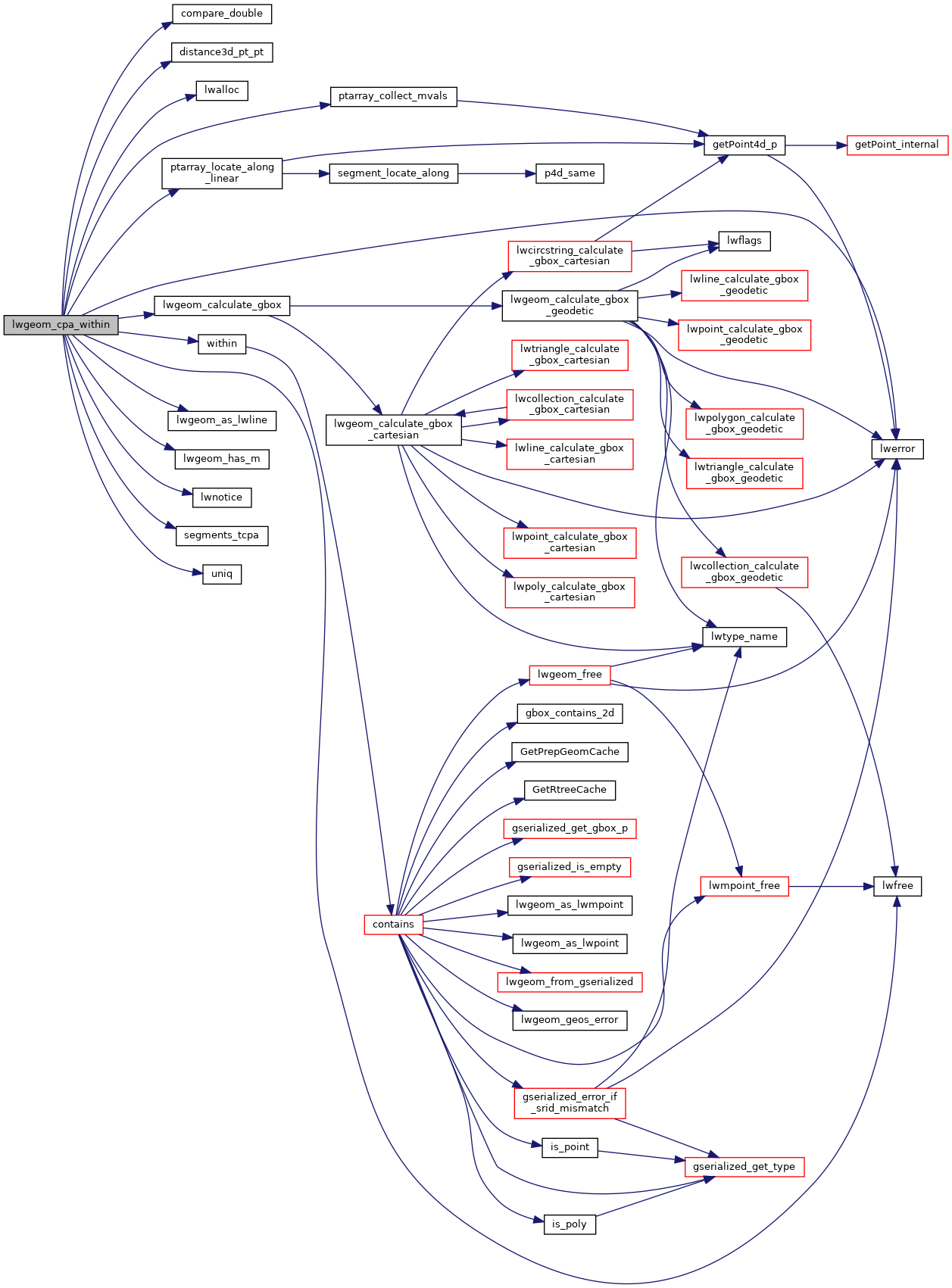◆ lwgeom_cpa_within()
Is the closest point of approach within a distance ?
- Returns
- LW_TRUE or LW_FALSE
Definition at line 1317 of file lwlinearreferencing.c.
1456 dist2 = (q0.x - p0.x) * (q0.x - p0.x) + (q0.y - p0.y) * (q0.y - p0.y) + (q0.z - p0.z) * (q0.z - p0.z);
double distance3d_pt_pt(const POINT3D *p1, const POINT3D *p2)
Definition: measures3d.c:1029
int lwgeom_calculate_gbox(const LWGEOM *lwgeom, GBOX *gbox)
Calculate bounding box of a geometry, automatically taking into account whether it is cartesian or ge...
Definition: lwgeom.c:755
int lwgeom_has_m(const LWGEOM *geom)
Return LW_TRUE if geometry has M ordinates.
Definition: lwgeom.c:941
static int ptarray_collect_mvals(const POINTARRAY *pa, double tmin, double tmax, double *mvals)
Definition: lwlinearreferencing.c:1071
static int compare_double(const void *pa, const void *pb)
Definition: lwlinearreferencing.c:1085
static double segments_tcpa(POINT4D *p0, const POINT4D *p1, POINT4D *q0, const POINT4D *q1, double t0, double t1)
Definition: lwlinearreferencing.c:987
static int ptarray_locate_along_linear(const POINTARRAY *pa, double m, POINT4D *p, uint32_t from)
Definition: lwlinearreferencing.c:1129
Definition: liblwgeom.h:352
Definition: liblwgeom.h:481
Definition: liblwgeom.h:401
Definition: liblwgeom.h:413
References compare_double(), distance3d_pt_pt(), FP_MAX, FP_MIN, LW_FALSE, LW_TRUE, lwalloc(), LWDEBUG, LWDEBUGF, lwerror(), lwfree(), lwgeom_as_lwline(), lwgeom_calculate_gbox(), lwgeom_has_m(), lwnotice(), GBOX::mmax, GBOX::mmin, POINTARRAY::npoints, LWLINE::points, ptarray_collect_mvals(), ptarray_locate_along_linear(), segments_tcpa(), uniq(), within(), POINT4D::x, POINT4D::y, and POINT4D::z.
Referenced by ST_CPAWithin(), and test_lwgeom_tcpa().
Here is the call graph for this function:

Here is the caller graph for this function:
